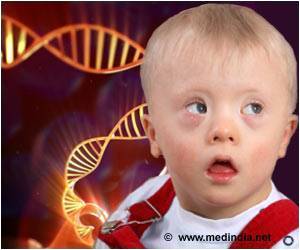Tiny yeast's DNA study has made scientists to pinpoint a large number of genes that can prevent a type of genetic rearrangement that may lead to cancer and other diseases.
Tiny yeast's DNA study has made scientists to pinpoint a large number of genes that can prevent a type of genetic rearrangement that may lead to cancer and other diseases.
Many of these genes, and their accompanying pathways, are involved in repairing mistakes in DNA replication.And the discovery of these genes by researchers at University of California, San Diego, could help explain how the body fends off so many potentially damaging genetic alterations while maintaining its stability.
"We've begun to identify the pathways that are very specific for preventing those types of rearrangements that involve DNA with duplications," Nature magazine quoted Dr. Richard Kolodner from UCSD as saying.
The researchers focused on a particular type of genetic change called a Gross Chromosomal Rearrangement (GCR), a large-scale change in the structures of chromosomes, which house genes.
Such changes might entail a sequence of genes being deleted or genetic material exchanging positions on chromosomes.
Kolodner said that while the human genome contains many regions where rearrangements, genetic duplications and other aberrations are more likely to occur, increasing the likelihood for chromosomal mistakes and genetic mutations, the genome is surprisingly stable.
Using a modified version of a previously developed test, they compared the rate and features of GCR formation in a chromosome region lacking "at-risk" DNA sequences with that of a region containing DNA duplications, which are more likely to drive rearrangements.
They also looked at the effects of various genes and pathways on the development of GCRs.
The research team found that many genes and genetic pathways that failed to block GCR formation in "lower-risk" regions actually played a large role in suppressing GCRs in "at-risk" areas.
"This work points out that there are many different and unexpected pathways that specifically prevent duplication-mediated rearrangements. All of these new pathways are important candidates for novel tumor suppressor genes and could be involved in cancer progression. They might also suggest novel therapeutic treatments," said a co-author of the study.
Kolodner said: "This is the first time we've identified pathways that can prevent GCRs mediated by at-risk sequences from happening."
He further added that if it can be shown that these genes are mutated in cancer, there could be reasons to target them because genetic defects are most often found in repair pathways.
Kolodner said that the list of genes and pathways is extensive, and will likely be much longer, which predicts that the list in humans will be 500 to 1,000 genes, and in yeast, closer to 500.
Source-ANI
ARU
 MEDINDIA
MEDINDIA



 Email
Email










